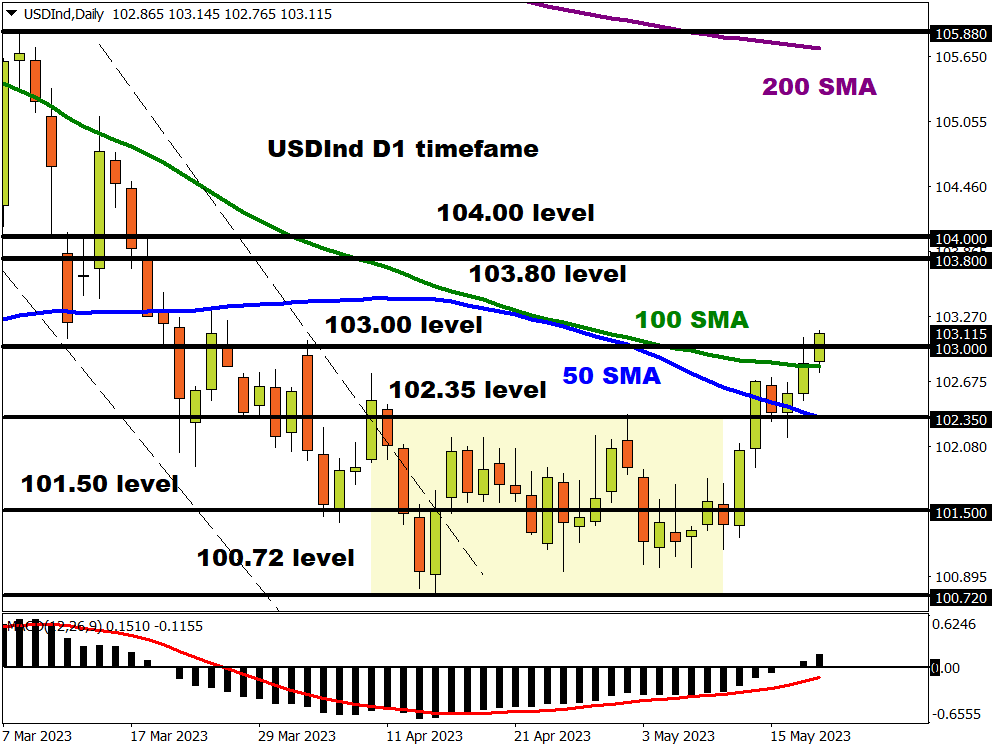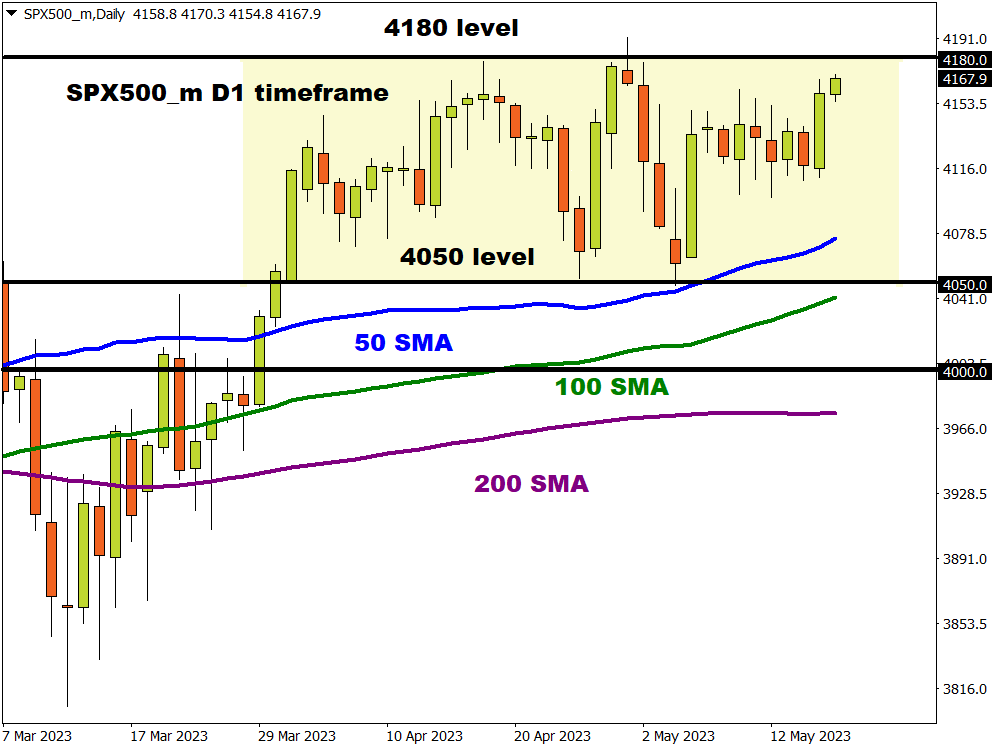Over the past few weeks, news around the US debt ceiling has hijacked global market headlines.
As the deadline for the US to raise its borrowing limit looms, you may be wondering what exactly is going on?
Here, we’ll explain what the US debt ceiling crisis is, why it’s a big deal, and how it could impact your trading.
What is the US debt ceiling?
Before we unpack the current developments in the US, you may be wondering what the debt ceiling is.
The debt ceiling is the maximum amount that the US government can borrow to pay its bills. The government spends more money than it collects in taxes, so it needs to take out debt to cover its expenses.
The debt ceiling was created by Congress more than a century ago with the intention of making it easier for an administration to borrow and govern. It used to be a routine thing, but not anymore.
- Fun fact: Congress has lifted the debt limit 78 times since 1960
The context:
The debt ceiling was last raised in December 2021 by $2.5 trillion, capping the limit at a staggering $31.4 trillion.
Back in late January 2023, the government was close to hitting its borrowing limit with the Treasury resorting to a set of “extraordinary measures” to continue paying its bills.
With these measures almost exhausted, the US could run out of cash to pay its bills as soon as 1st June according to Treasury Secretary Janet Yellen. However, other economists have pencilled different “X-dates” for when the Treasury runs out of funds.
President Biden and Republican leaders are now desperately trying to negotiate a deal to raise the debt limit.
The politics:
In a nutshell, a disagreement between US President Joe Biden and Republican leaders over the national debt ceiling has rapidly escalated into a major threat to global financial markets.
A fierce tug of war is taking place with both sides refusing to budge, even as the window to strike a deal shrinks.
Republicans are concerned about increasing national debt, and are refusing to lift the debt ceiling unless it’s complemented with spending cuts. However, Democrats say it’s Congress’s job to raise the debt ceiling without conditions, as was done three times under the Trump administration.
What’s the most likely outcome?
To be clear, markets are not expecting a default with traders pricing a less than 10% chance of it happening.
Recent reports suggest that US President Joe Biden and top congressional Republican Kevin McCarthy are edging closer to a deal. One thing to keep in mind is that the US has never defaulted on its debt payments before, so exactly what would happen in that scenario remains unclear.
Looking at past history, the political standoff typically ends with hastily arranged agreements at the eleventh hour.
A trip down memory lane:
This is not the first time that debt limit drama has roiled markets and left investors edgy.
Back in 2011, this was a major issue that triggered explosive levels of market volatility, as lawmakers came to an agreement just 72 hours before a default. However, this was not enough to prevent Standard and Poor’s from downgrading the US government’s credit rating from AAA to AA+.
What are the possible consequences of a default?
The heaviest price will a loss in investor trust and faith in the United States ability to pay back its debt. As the saying goes: once trust is broken, it’s hard to rebuild.
This could have monstrous consequences on the US economy, with the shockwaves spreading throughout global financial markets.
It must be kept in mind that US government debt is seen to a great degree as “risk-free” due to the country’s impeccable track record of paying up on time. Given the heavy reliance, trust and importance the financial system places on US Treasury bonds, a default could be catastrophic, with the full extent of the damage to financial markets unknown.
3 assets to keep an eye on:
With the window to strike a deal shrinking, it may be wise to keep a close eye on these 3 assets.
- US dollar
In times of uncertainty, investors tend to rush toward safe-haven destinations including the dollar. But what happens when the source of uncertainty is centered around the US economy?
- If the US defaults on its debt: this could be the knockout blow for the dollar despite the explosive levels of risk aversion. A US default will shatter confidence in the world’s reserve currency and encourage nations to hunt for more reliable alternatives. This could reduce appetite for the dollar, decreasing its value as a result.
- If Congress reach a deal before the deadline: given what’s at stake, such an outcome will come as a relief to global markets and support the dollar as investor confidence returns over the US ability to pay its debt.
- The technical picture: the US Dollar Index remains in a wide range on the daily charts. It may be wise to keep an eye on how prices behave around 103.00.

- S&P500
- Wall Street may be in the direct firing line in the event of a default as risk aversion sweeps across the board. Back in 2011, the S&P 500 fell about 17% in the period surrounding the 2011 debt limit debate. So, an actual default could result in a bloodbath on Wall Street that spreads across the globe.
- If the White House and Congress strike a deal, stock markets may rally aggressively in what may be a relief rally and return on risk sentiment. This could send the S&P500 and other major US indices higher.
- Looking at the technicals, the SPX500 remains in a wide range with support at 4050 and resistance at 4180.

- Gold
- Gold could shine through the chaos of a US default thanks to the combination of risk aversion and dollar weakness. This incredibly negative development may propel the precious metal to fresh 2023 highs, and even new all-time highs beyond $2,075 as pandemonium sends investors rushing to any form of safety.
- If a deal is reached, it may be negative for gold. The jump in risk appetite and potential boost to the dollar may drag gold prices lower in the short to medium term.
- Talking technicals, gold is trading below the $1970 level with bears eyeing $1945. A breakdown below this level could trigger a further decline towards $1900. If prices can push back above $2,000, we could see $2,032 and $2,047, respectively.